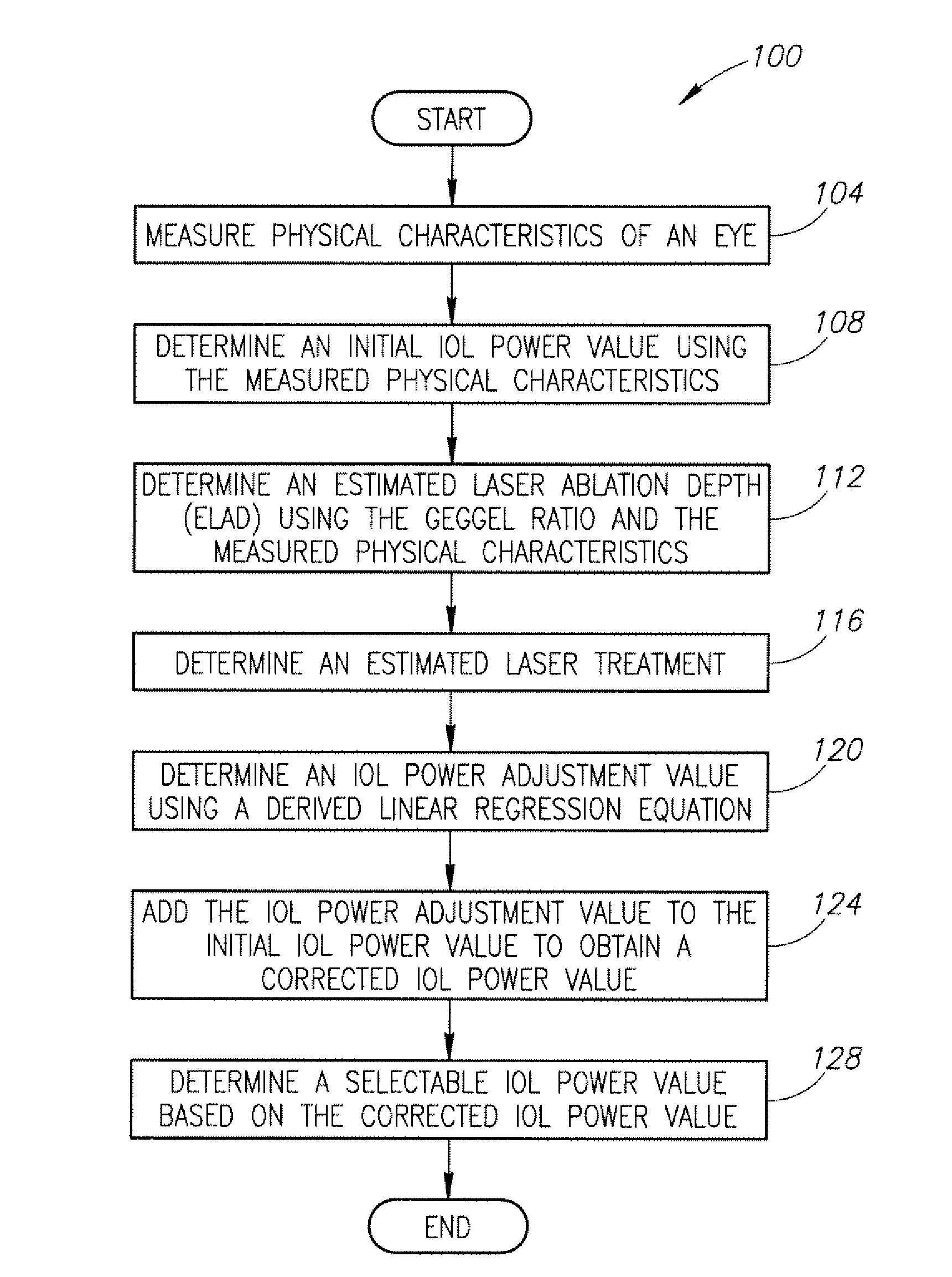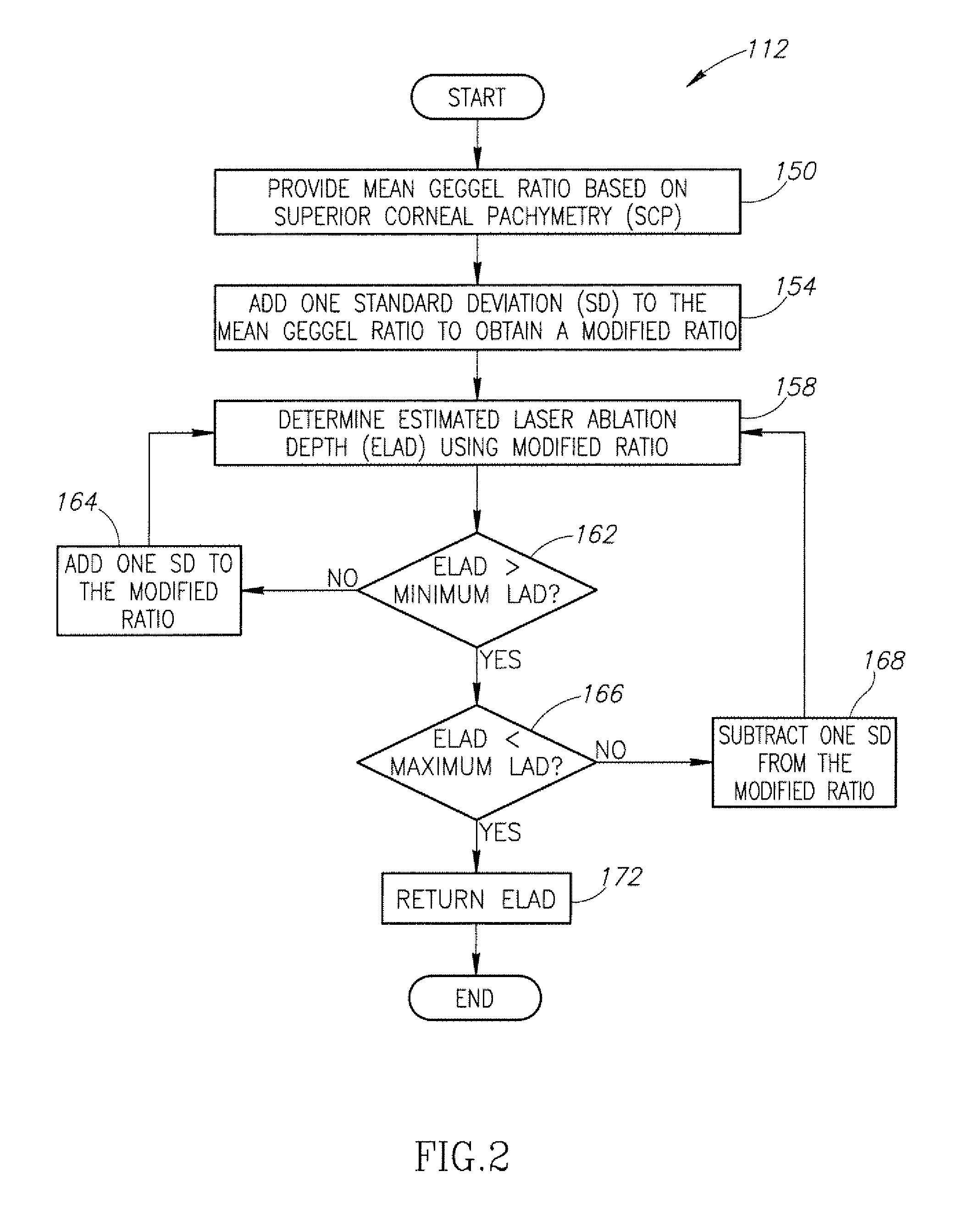No-history method for intraocular lens power adjustment after excimer laser refractive surgery
a technology of laser refractive surgery and no history, applied in the field of no history method for intraocular lens power adjustment after laser refractive surgery, can solve problems such as unwanted postoperative hyperopia
- Summary
- Abstract
- Description
- Claims
- Application Information
AI Technical Summary
Problems solved by technology
Method used
Image
Examples
study and examples
Patient Study and Examples
[0035]The following examples are provided to better illustrate the claimed invention and are not to be interpreted as limiting the scope of the invention. To the extent that specific materials are mentioned, it is merely for purposes of illustration and is not intended to limit the invention. One skilled in the art may develop equivalent means without the exercise of inventive capacity and without departing from the scope of the invention.
[0036]A retrospective analysis was performed on patients who previously underwent LASIK or PRK who presented with mature cataracts requiring phacoemulsification and posterior chamber IOL implantation at the Virginia Mason Medical Center in Seattle from June 2006 to August 2008. The study was performed with the approval of the Virginia Mason Medical Center Institutional Review Board / Ethics Committee and in accordance with the U.S. Health Insurance Portability and Accountability Act and the Declaration of Helsinki guidelines...
case examples
Case 1
[0041]A. Preoperative laser manifest Rx: −2.25 (SE −2.25)[0042]B. Axial length 23.99 mm, pre-IOL keratometry: 41.75 / 43.00; SRK / T value: 21.02 D[0043]C. Laser treatment: 32 μm[0044]Pre-IOL central pachymetry: 590 μm[0045]Pre-IOL superior corneal pachymetry: 830 μm[0046]Mean Geggel ratio+1 SD=0.758[0047]Geggel ratio technique: (590+A) / 830=0.758; A=39.1 μm 39.1 μm / 12=−3.26 D[0048]D. −0.399X−3.26−0.40=0.90 D[0049]E. Geggel pachymetry IOL=0.90+21.02=21.92 D[0050]F. IOL proposed: 22.50 D, Ideal IOL: 22.50 D
case 2
[0051]A. Preoperative laser manifest Rx: −7.25−2.00X177 (SE −8.25)[0052]B. Axial length 26.82 mm, pre-IOL keratometry: 37.37 / 37.75; SRK / T value: 18.09 D[0053]C. Laser treatment: 88 μm[0054]Pre-IOL central pachymetry: 512 μm[0055]Pre-IOL superior corneal pachymetry: 822 μm[0056]Mean Geggel ratio+1 SD=0.758[0057]Geggel ratio technique: (512+A) / 822=0.758; A=111 μm[0058]Because A>105 μm (maximum LAD), recalculate using the mean value for Geggel ratio (i.e., subtract 1 SD):[0059](512+A) / 822=0.725; A=83.95 μm[0060]83.95 μm / 12=−7.00 D[0061]D. −0.399X−7.00−0.40=2.39 D[0062]E. Geggel pachymetry IOL=2.39+18.09=20.48 D[0063]F. IOL proposed: 21.0 D, Ideal IOL: 21.0 D
PUM
 Login to View More
Login to View More Abstract
Description
Claims
Application Information
 Login to View More
Login to View More - R&D
- Intellectual Property
- Life Sciences
- Materials
- Tech Scout
- Unparalleled Data Quality
- Higher Quality Content
- 60% Fewer Hallucinations
Browse by: Latest US Patents, China's latest patents, Technical Efficacy Thesaurus, Application Domain, Technology Topic, Popular Technical Reports.
© 2025 PatSnap. All rights reserved.Legal|Privacy policy|Modern Slavery Act Transparency Statement|Sitemap|About US| Contact US: help@patsnap.com



